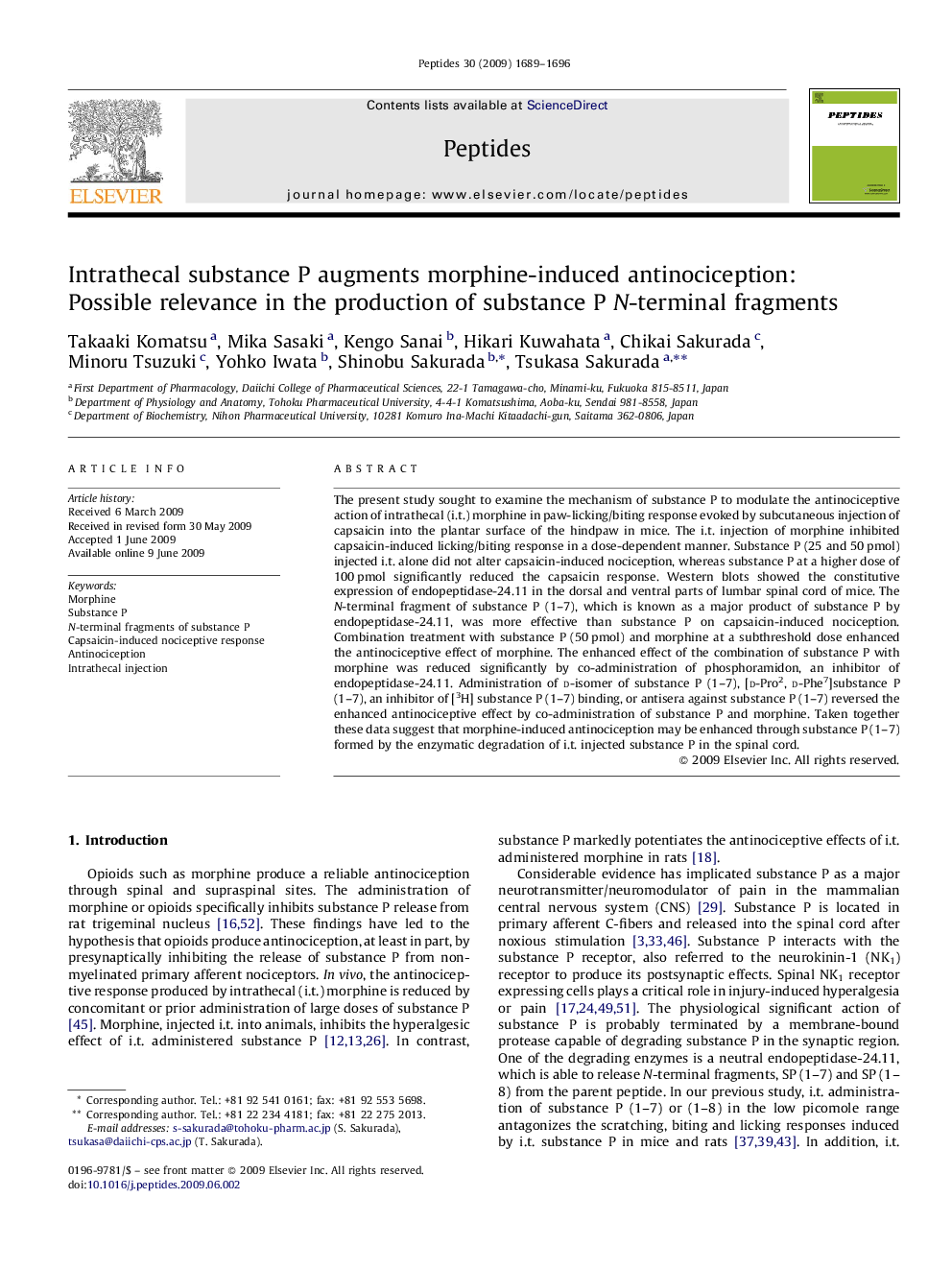| Article ID | Journal | Published Year | Pages | File Type |
|---|---|---|---|---|
| 2007093 | Peptides | 2009 | 8 Pages |
Abstract
The present study sought to examine the mechanism of substance P to modulate the antinociceptive action of intrathecal (i.t.) morphine in paw-licking/biting response evoked by subcutaneous injection of capsaicin into the plantar surface of the hindpaw in mice. The i.t. injection of morphine inhibited capsaicin-induced licking/biting response in a dose-dependent manner. Substance P (25 and 50Â pmol) injected i.t. alone did not alter capsaicin-induced nociception, whereas substance P at a higher dose of 100Â pmol significantly reduced the capsaicin response. Western blots showed the constitutive expression of endopeptidase-24.11 in the dorsal and ventral parts of lumbar spinal cord of mice. The N-terminal fragment of substance P (1-7), which is known as a major product of substance P by endopeptidase-24.11, was more effective than substance P on capsaicin-induced nociception. Combination treatment with substance P (50Â pmol) and morphine at a subthreshold dose enhanced the antinociceptive effect of morphine. The enhanced effect of the combination of substance P with morphine was reduced significantly by co-administration of phosphoramidon, an inhibitor of endopeptidase-24.11. Administration of d-isomer of substance P (1-7), [d-Pro2, d-Phe7]substance P (1-7), an inhibitor of [3H] substance P (1-7) binding, or antisera against substance P (1-7) reversed the enhanced antinociceptive effect by co-administration of substance P and morphine. Taken together these data suggest that morphine-induced antinociception may be enhanced through substance P (1-7) formed by the enzymatic degradation of i.t. injected substance P in the spinal cord.
Related Topics
Life Sciences
Biochemistry, Genetics and Molecular Biology
Biochemistry
Authors
Takaaki Komatsu, Mika Sasaki, Kengo Sanai, Hikari Kuwahata, Chikai Sakurada, Minoru Tsuzuki, Yohko Iwata, Shinobu Sakurada, Tsukasa Sakurada,
